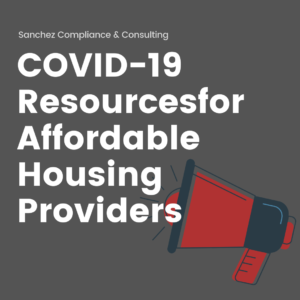Managing any property comes with challenges, especially keeping up with changes in compliance standards. We know that you already have a list of rules and regulations to track, but are you up-to-date on the latest LIHTC utility allowance rules?
Here’s everything you need to know about the LIHTC utility allowance rules you need to follow as you prepare for your annual review.
3 LIHTC Utility Allowance Rules to Follow for Your Annual Review
Your low-income housing tax credit (LIHTC) annual utility allowance review is a critical opportunity to update information and create new utility schedules. These are the LIHTC utility allowance rules that are key to success in 2020.
1. Utility Metering and Calculating
How you meter and calculate utilities is a cornerstone of the LIHTC utility allowance. You have three different choices for measuring utility service, or metering, your tenants:
- Checkmetered utilities
- Individually-metered utilities
- Master-metered utilities
As for calculating utility allowance limits, LIHTC properties can use the Public Housing Authority (PHA) Utility Allowance, Written Local Estimate, HUD Utility Schedule Model (HUSM), Actual Use and Energy Consumption Model methodologies. HOME properties can also choose from the methodologies listed above however are prohibited from using the PHA Method.
2. Utility Allowance Schedules
One of the compliance requirements of working with HUD and the Texas Department of Housing and Community Affairs is that you keep a utility allowance schedule. This schedule contains:
- Tenant-paid utilities (excluding telephone service)
- Tenant-supplied appliances
- Tenant-paid housing services
You’ll also need to include your metering and methodology information, plus information on the units and number of residents in each unit.
3. Affordable Housing Income Limits
Part of maintaining affordable housing compliance standards is adhering to income limits to help set rent. There are two income categories for LIHTC properties:
- 50% Income Limits
- 60% Income Limits
The actual limits will vary based on the average median income for a given location. Austin, for example, has a 50% single income limit of $34,200, and San Antonio has a 50% single income limit of $25,200.
What are the LIHTC Rent Limits for the HUD Utility Allowance?
First, let’s clarify that income limits are distinct from rent limits. Income limits signify the maximum amount someone can make and live in low-income housing.
Rent limits, on the other hand, indicate the maximum rent an affordable housing property can charge.
There are no specific rent limits, but these are the criteria that determine them:
- Income: LIHTC rent limits are a percentage of the income limit.
- Location: LIHTC rent limits will change depending on the average median income in an area.
- Rooms: LIHTC rent limits vary depending on the number of bedrooms in a unit.
This essentially means that every apartment or affordable housing property can have different rent limits, so income and utility allowances are a better indicator of rent payments.
Finding a Compliance Consultant for Your LIHTC Utility Allowance Review
We know how tedious it is to prepare for your LIHTC utility allowance review. That’s why we encourage you to consider a compliance consultant. A compliance consultant can help you create a unique solution to your regulatory requirements.
Looking for an affordable housing compliance consultant? Sanchez Compliance & Consulting has the resources you need for all your property management needs.


